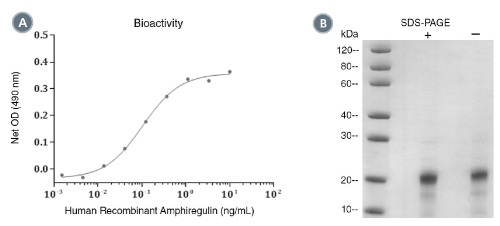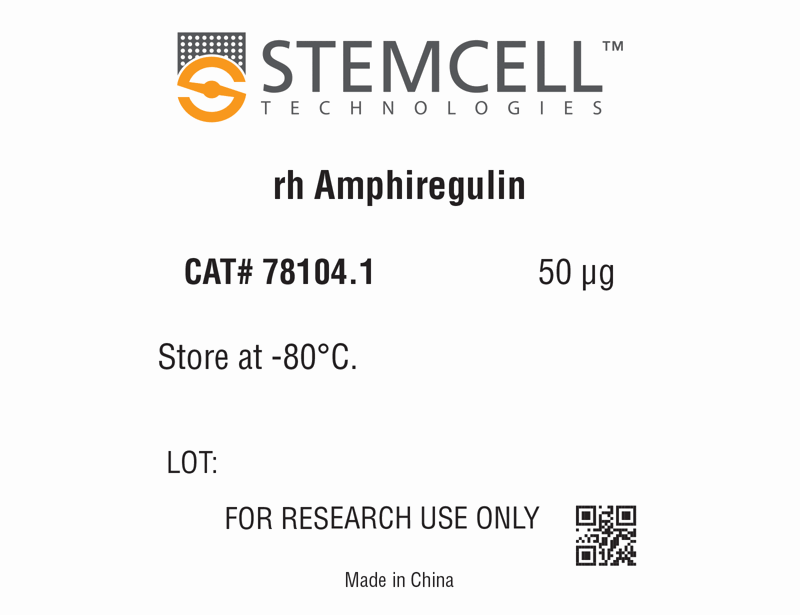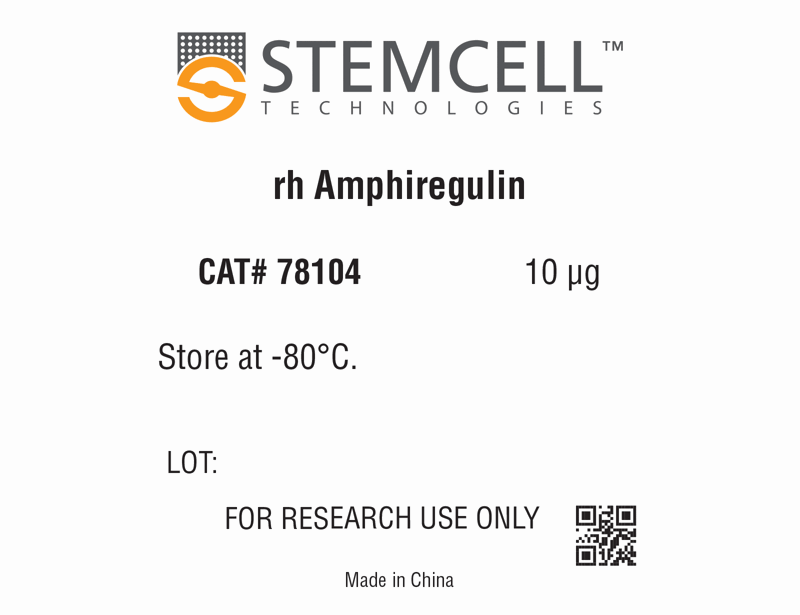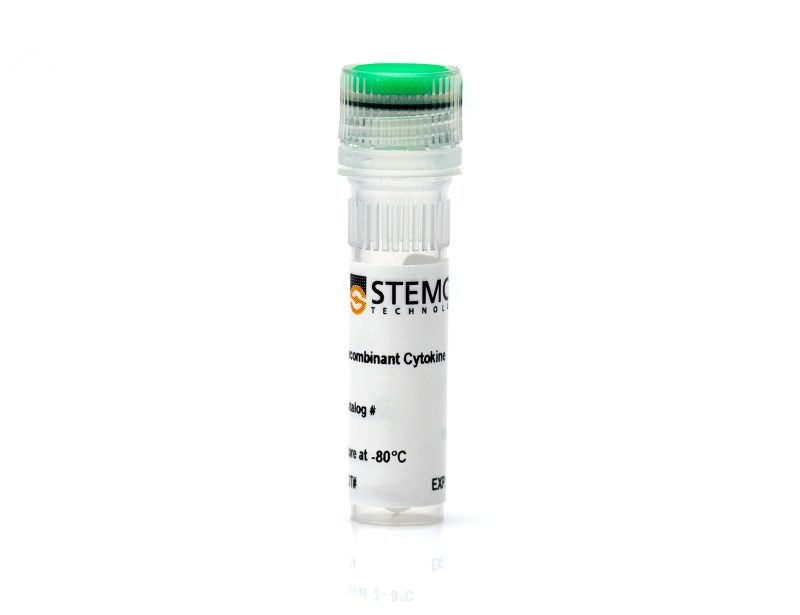Human Recombinant Amphiregulin
Amphiregulin
概要
Amphiregulin is a member of the epidermal growth factor (EGF) family. It binds to several receptors including EGFR/ErbB1, HER2/ErbB2, HER3/ErbB3, and HER4/ErbB4, which activates Ras/Raf/MAPK and PI3K/AKT pathways. This results in cell proliferation, apoptosis resistance, and invasive behaviour (Normanno et al.). The expression of amphiregulin is induced by tissue injury and inflammation. Amphiregulin promotes mammary development, trophoblast growth, lung and kidney branching morphogenesis, and keratinocyte proliferation. It stimulates the growth of most cell types, including normal and transformed mammary epithelial cells, and malignant cells of the colon, prostate, cervix, and pancreas (Berasain & Avila).
Subtype
Cytokines
Alternative Names
AR, AREG, AREGB, Colorectum cell-derived growth factor, CRDGF, MGC13647, Schwannoma-derived growth factor, SDGF
Cell Type
Airway Cells, Mammary Cells
Species
Human
Area of Interest
Epithelial Cell Biology
Molecular Weight
11.3 kDa
Purity
≥ 95%
技术资料
| Document Type | 产品名称 | Catalog # | Lot # | 语言 |
|---|---|---|---|---|
| Product Information Sheet | Human Recombinant Amphiregulin | 78104, 78104.1 | All | English |
| Safety Data Sheet | Human Recombinant Amphiregulin | 78104, 78104.1 | All | English |
数据及文献
Data

(A) The biological activity of Human Recombinant Amphiregulin was tested by its ability to promote the proliferation of BALB/c 3T3 cells. Cell proliferation was measured using a fluorometric assay method. The EC50 is defined as the effective concentration of the growth factor at which cell proliferation is at 50% of maximum. The EC50 in the above example is less than 0.2 ng/mL. (B) 2 μg of Human Recombinant Amphiregulin was resolved with SDS-PAGE under reducing (+) and non-reducing (-) conditions and visualized by Coomassie Blue staining.



